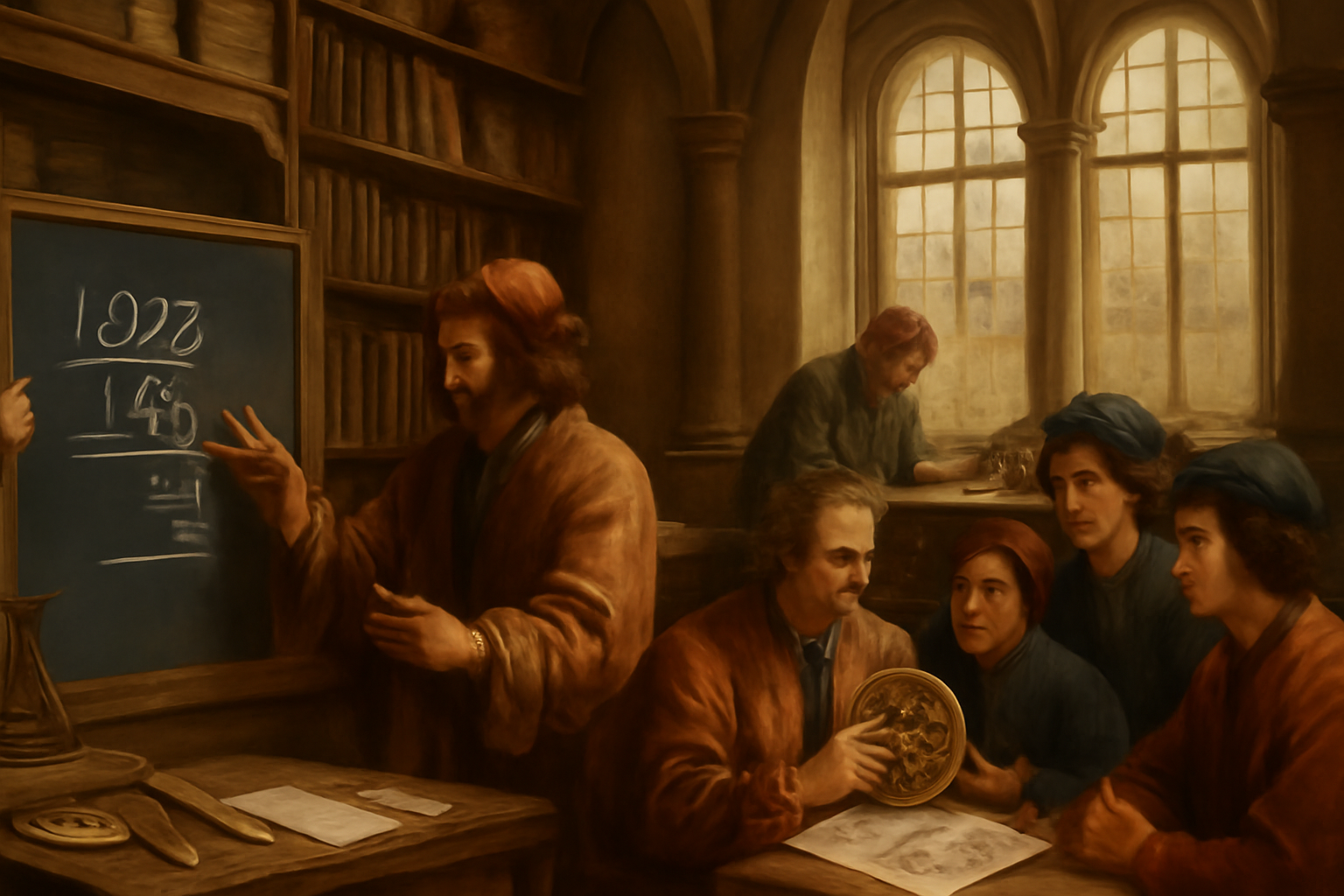
Decimals and Discoveries: A Renaissance Revolution in Numbers
Imagine Europe in the early 1500s—a time buzzing with curiosity, exploration, and the rediscovery of ancient knowledge. Among the many treasures unveiled during this Renaissance era was a remarkable breakthrough in how people understood and used numbers. In 1523, Simon Stevin, a brilliant mathematician from the Low Countries, introduced the world to decimal notation through his groundbreaking book La Disme. Before Stevin, calculations were cumbersome and error-prone, relying on fractions and Roman numerals. His innovative approach made arithmetic simpler and more precise, transforming commerce and science alike. With decimals, merchants could tally accounts with ease, explorers could chart seas more accurately, and scientists could perform calculations with newfound confidence.
Just a year after Stevin’s breakthrough, the Italian polymath Francesco di Giorgio Martini published De Re Militari, a pioneering work that bridged mathematics with military science and architecture. Martini, a skilled engineer and architect, demonstrated how mathematical principles could optimize fortifications, turning castles and city walls into impenetrable defenses. His insights were not just theoretical; they revolutionized military strategy at a time when Europe was fraught with conflict. Through Martini’s work, mathematics stepped out of the abstract and into the world’s battlegrounds, showing how numbers and geometry could safeguard kingdoms and shape skylines.
As the Renaissance blossomed, so too did a community of thinkers who recognized mathematics as more than a dry discipline. Niccolò Tartaglia, one of the era’s most passionate advocates for mathematical literacy, championed its importance for all walks of life—from master builders to sea navigators. Around this time, informal networks of mathematicians and scientists began to flourish across Europe. These early collaborations, fueled by correspondence and shared manuscripts, accelerated the spread of new ideas and allowed scholars to build on one another’s discoveries more rapidly than ever before. What started as isolated insights became a collective wave of progress, laying the groundwork for the mathematical tools we rely on today.
Together, these stories from the early 16th century tell of a remarkable transformation—where decimals, military engineering, algebraic thinking, and the spirit of collaboration converged to turn mathematics into a powerful and practical force for everyday life. It was a time when numbers were no longer just symbols but keys to unlocking the mysteries of the world.
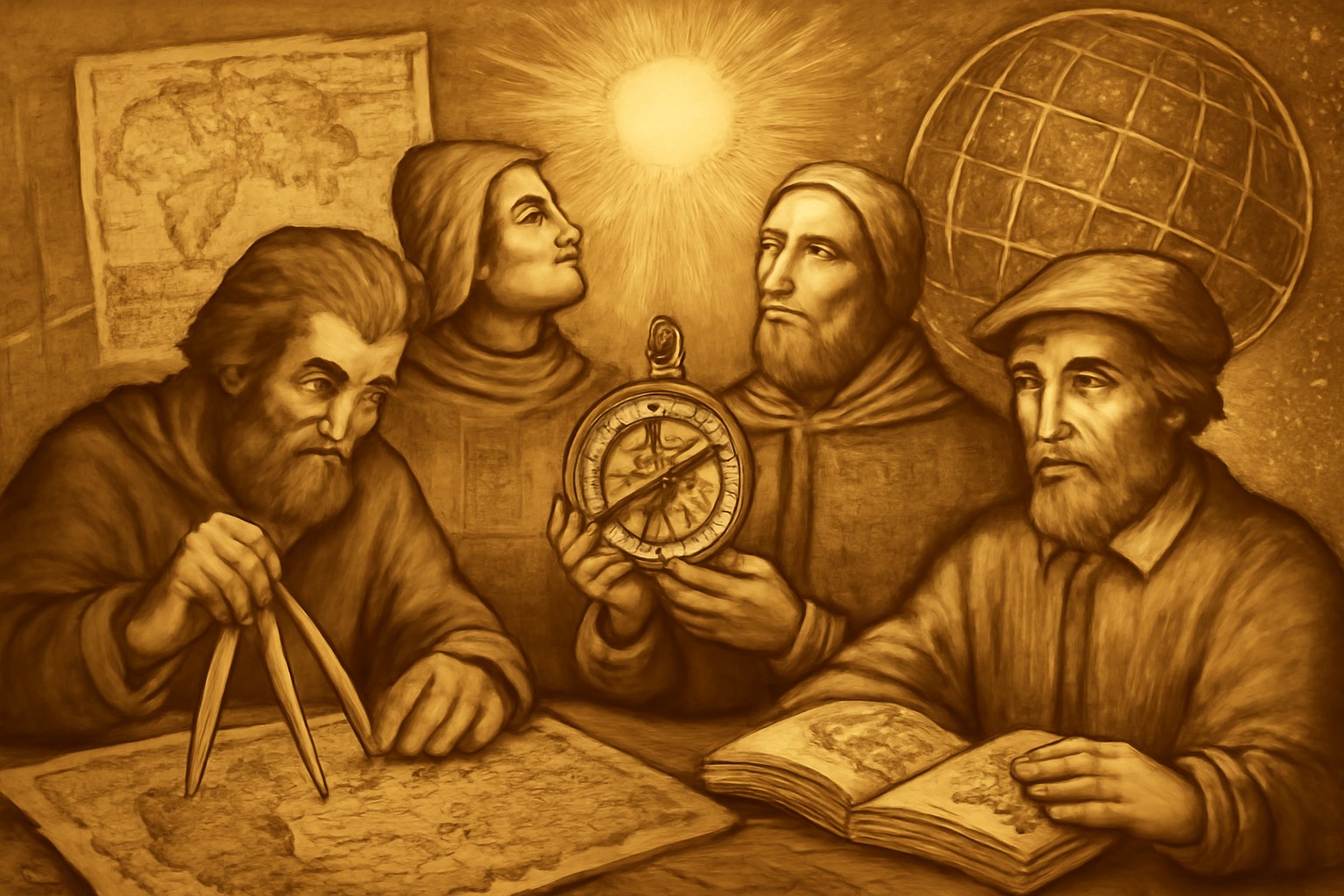
A Time of Discovery, Innovation, and Renaissance Spirit
The years surrounding 1520 marked an extraordinary chapter in the history of mathematics, a period brimming with intellectual quests, practical innovations, and the vibrant energy of Renaissance humanism. This was an era where ancient wisdom met bold new ideas, setting the stage for the revolutionary developments that would shape the future of science and technology.
At the heart of this mathematical awakening was Girolamo Cardano, the brilliant Italian mathematician whose work De adaequationibus pushed the boundaries of algebra. Around 1520-21, Cardano explored solutions to cubic equations — problems that had puzzled mathematicians for centuries. By delving into these complex polynomial equations, he laid foundational stones for algebra’s future, moving beyond the quadratic equations that had dominated earlier study. Though Cardano’s most famous work, Ars Magna, was published later in 1545, his early investigations during this period foretold a new era of mathematical problem-solving.
Meanwhile, the political and religious landscape also influenced the intellectual climate. While the Edict of Nantes itself was issued later in 1598, the early 16th century was witnessing the initial stirrings of religious tolerance in parts of Europe, especially in France, which gradually fostered an atmosphere where scholars could pursue learning relatively freely. This climate provided fertile ground for mathematicians, astronomers, and natural philosophers to exchange ideas without fear of persecution, promoting a culture of curiosity and progress.
Numbers themselves were undergoing transformation. The widespread adoption of decimal notation, inspired by earlier advances from Indian mathematicians and popularized in Europe through translations and manuals, began to simplify calculations dramatically. Decimal fractions replaced cumbersome fractions and Roman numerals, making arithmetic accessible to merchants, navigators, and scientists alike. This decimal system unlocked new potential in commerce and scientific measurement, empowering explorers during the Age of Discovery and enabling more precise astronomical observations.
All this mathematical ferment was intimately tied to Renaissance humanism, the powerful intellectual movement which sought to recover and harmonize the knowledge of antiquity with contemporary thought. Humanists eagerly translated, edited, and taught ancient texts from Greek mathematicians like Euclid, Archimedes, and Ptolemy, making their elegant geometrical and numerical insights accessible to a new generation of scholars. This blending of classical knowledge with innovative methods led to advances in perspective in art, improved navigation techniques, architectural precision, and the early stirrings of what would become modern science.
In essence, the early 1520s were more than just a date on the timeline; they marked a turning point where mathematics blossomed into a vibrant discipline with practical and theoretical depth. From Cardano’s algebraic explorations to Pacioli’s accounting manuals, from the spread of decimal notation to the encouragement of freer intellectual exchange, these years set a firm foundation for the scientific revolutions that would follow.
Mathematics during 1520-21 was not just about numbers and equations — it was about the bold act of transforming how humans understand and interact with the world. It was a story of curiosity, courage, and creativity, woven deeply into the fabric of Renaissance culture and the unfolding Age of Discovery.
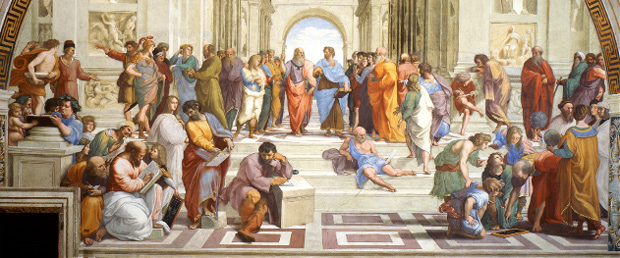
Arrival of a new dawn in early Renaissance period
Picture a chilly, lamp-lit study in early 16th-century Poland. Nicolaus Copernicus sits hunched over his manuscripts and telescopic notes, daring to challenge centuries—no, millennia—of tradition. For so long, everyone believed Earth was the center of everything. Yet, Copernicus has a radical idea: What if the sun, not the Earth, was at the heart of our universe?
This heliocentric theory would astonish Europe. It flipped the script on the cosmos and set the stars spinning in new, beautiful orbits. Word spread like wildfire, inspiring mathematicians and astronomers to study the skies with fresh eyes and bold dreams.
Decades earlier, further south in Italy, a young Leonardo of Pisa—better known as Fibonacci—was stirring up a different kind of revolution. In bustling marketplaces and echoing cathedrals, merchants and scholars struggled with the clunky, confusing symbols of Roman numerals. Fibonacci, drawing from the wisdom he encountered while traveling along Mediterranean trade routes, offered a better system: the Hindu-Arabic numerals we use today.
Through his groundbreaking book, “Liber Abaci,” published all the way back in 1202, he didn’t just show how numbers could be simpler—he revealed the elegant, spiraling beauty of the Fibonacci sequence. Slowly but surely, Europe embraced this “new math,” making calculations easier for everyone from merchants to astronomers.
With new worlds beckoning beyond the Atlantic, European explorers needed better ways to navigate roaring seas. Enter Gemma Frisius and his contemporaries, who brought the power of trigonometry and innovative geometry to mapmaking. Their work made the mysterious edges of the world a little less unknown.
Soon, mathematicians and scholars were connecting, comparing notes across borders and generations. Royal courts funded their studies, universities opened doors, and all around Europe, brilliant minds worked together like never before.
The spirit of the Renaissance swept through, guiding everyone back to the classic works of Greece and Rome. Thinkers like Erasmus declared mathematics essential for every learned person, elevating its role in education and daily life.
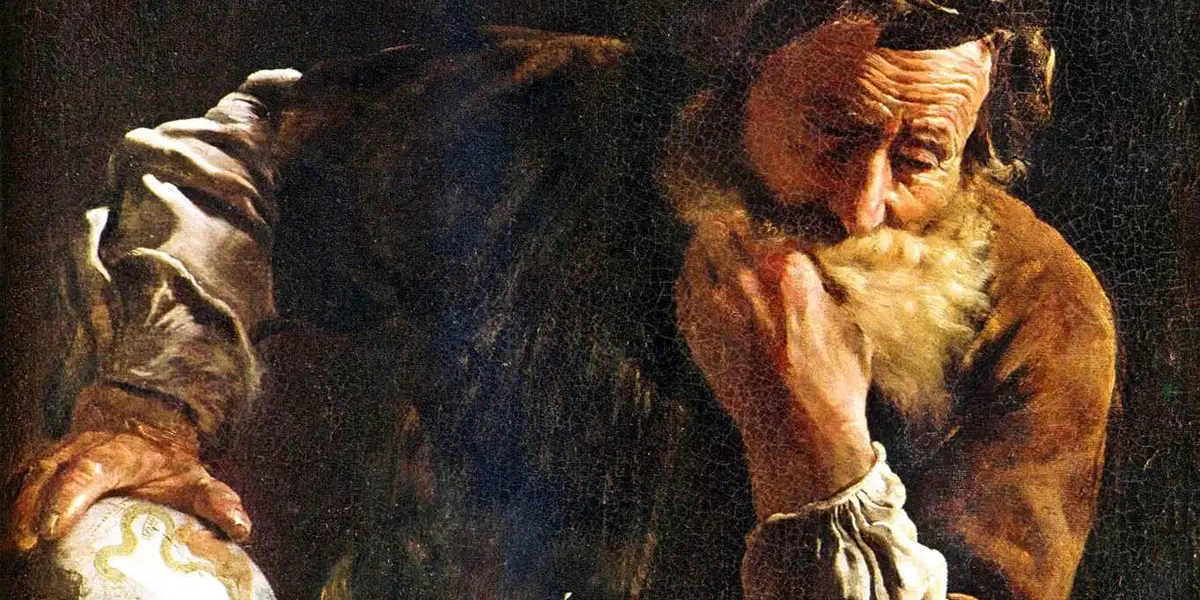
Mathematical Renaissance: How 1510-1511 Sparked a New Era of Discovery
The years 1510 and 1511 were crucial in shaping modern mathematics, driven by brilliant minds and innovative ideas. Johannes Müller, also known as Regiomontanus, saw his influential work on trigonometry gain popularity during this period, aiding navigators and astronomers alike. Although Regiomontanus passed away in 1476, his book “De Triangulis” provided foundational insights into trigonometry that began to circulate widely in academic circles around 1510-1511, highlighting the importance of trigonometry in practical applications.
In parallel, mathematician and cleric John Napier was laying the groundwork for logarithms during this time. Although he published his findings a few years later, his preliminary calculations significantly influenced how people approached mathematical problems, paving the way for simplified computations that would revolutionize fields such as science and engineering.
This era also marked the growing acceptance of decimal fractions across Europe, which made everyday calculations easier, particularly in trade and commerce. While the concept had been introduced earlier, it gained popularity due to the efforts of notable mathematicians like Simon Stevin in the late 16th century. The early implementations of decimal fractions allowed for more efficient and accessible calculations, thereby benefiting everyday users.
The Renaissance spirit of learning and inquiry influenced scholars to recognize the importance of mathematics, not only in theory but also in practical applications. This shift encouraged a greater number of texts emphasizing problem-solving and real-world applications, effectively bridging the gap between mathematics and daily life.
Moreover, this period witnessed the emergence of collaborative intellectual networks among mathematicians and astronomers, who shared ideas across Europe. Increasing correspondence and cooperation among scholars led to an interdisciplinary approach, whereby mathematics began to intertwine more closely with astronomy, physics, and navigation. This collaborative spirit significantly shaped the development of mathematical thought and set the stage for future discoveries.
Through these developments, these years represent a pivotal moment in mathematics, setting the stage for advances that would resonate through the Renaissance and beyond.
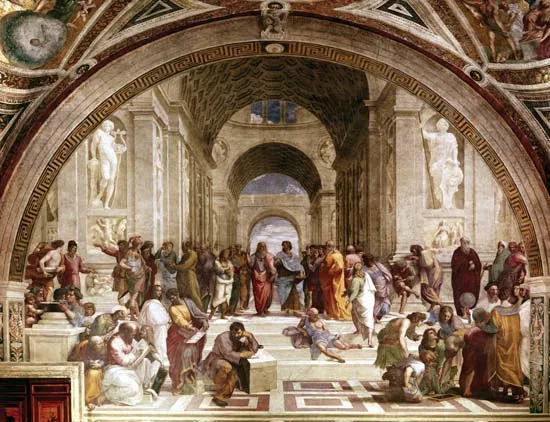
The Merchant’s Ledger
In the bustling streets of early 16th-century Italy, merchants and scholars crossed paths in vibrant marketplaces. Among them walked Luca Pacioli, a man whose curiosity for numbers matched his faith in order. In 1522, Pacioli unveiled his seminal work, “Aritmetica.” It was more than a book—it was a beacon that illuminated the secrets of arithmetic, practical mathematics, and the intricate art of accounting.
This treatise did the unthinkable: it blended the merchant’s needs with the precision of mathematical principles. With it, Pacioli laid the blueprint for double-entry bookkeeping, forever changing how traders, banks, and cities managed their fortunes. Soon, whispers spread, and he became revered as the “father of accounting,” a title that still rings true today.
Yet the story of numbers didn’t start there. Mathematicians across Europe dusted off the works of ancient masters—Euclid, Archimedes, and their peers. Renaissance thinkers, fueled by fresh translations and boundless curiosity, unlocked the geometric puzzles and clever devices of these classical scholars. Each theorem rediscovered became a new brick in the foundation of Renaissance knowledge, reminding the world that progress often begins by standing on the shoulders of giants.
The sea called, and so did the promise of adventure. As daring explorers readied their ships, a quieter preparation was underway. Trigonometry—the language of triangles—emerged as every navigator’s secret weapon. Whether charting a course to mysterious continents or aligning the sails with shifting winds, these mathematical tools made the impossible possible.
With each journey, mathematics was at the helm. Calculations guided new trade routes that would reshape economies, and every successful voyage was a testament to humanity’s ability to merge curiosity with calculation.
Not all Renaissance heroes brandished equations. Joseph Justus Scaliger, a scholar with a passion for order, dedicated himself to arranging the epochs and events of history. Through his innovations in chronology and his influence on early statistical methods, Scaliger wove together the threads of numbers, stories, and time. His efforts revealed that mathematics was not only a tool but a universal language—one that could bring structure to chaos and bridge distant disciplines.
As the 1500s drew to a close, something remarkable began to stir. Scholars experimented with graphical representations—sketching out the first visual echoes of mathematical ideas that, centuries later, would blossom into modern charts and graphs. Though fledgling and sometimes overlooked, these early attempts hinted at a future where even complex relationships could be made clear at a glance—democratizing knowledge in ways unimagined before.
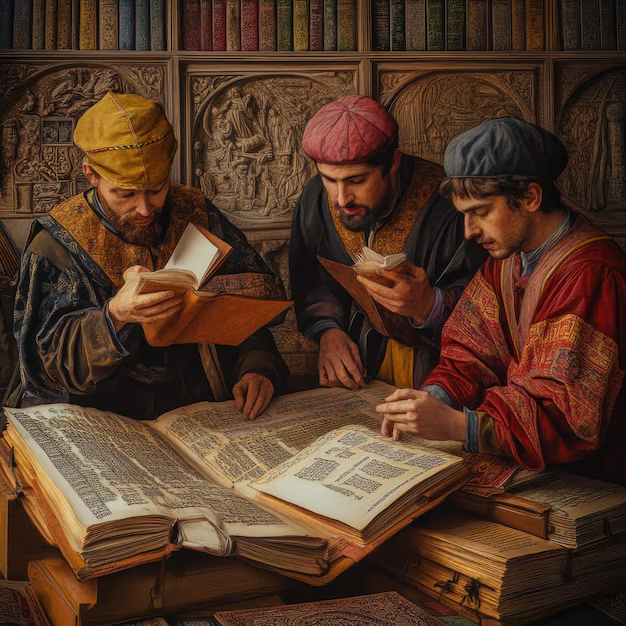
The Birth of Modern Algebra and Mathematical Exploration
The early 1500s were a bustling time for mathematics, laying the foundations for the discipline as we know it today. In 1506, Italian mathematician Giovanni Battista Benedetti began to turn heads with a fresh, systematic approach to solving equations. He was one of the first to use letters as placeholders for unknown quantities, paving the way for the future growth of algebra.
Meanwhile, Fibonacci’s influential book, *Liber Abaci*, originally published in 1202, gained renewed attention and reshaped trade and accounting practices with its clear introduction of the Hindu-Arabic numeral system.
Around the same time, Portuguese mathematician Pedro Nunes published crucial advancements in geometry that would significantly aid navigation, effectively linking mathematics with exploration.
Additionally, this period witnessed growing debates about the acceptance of negative numbers. Increasingly embraced by mathematicians, these numbers would eventually revolutionize various fields, including finance and physics.
All these remarkable developments were further spread thanks to the burgeoning printing press, which made mathematical ideas accessible to curious minds across Europe.
These pivotal moments from 1506 to 1507 laid the groundwork for numerous developments in mathematics, ultimately shaping the discipline and influencing future scholars and thinkers.
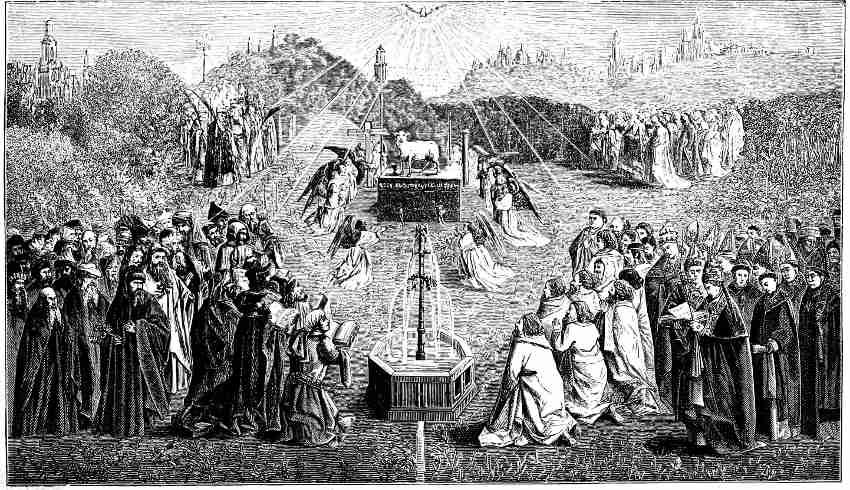
Navigating Numbers and Art : The Mathematical Awakening of the early 16th Century
Between 1503 and 1504, a quiet revolution was unfolding in the world of mathematics—one that would forever change how people understood numbers, shapes, and the world around them. In the heart of Renaissance Italy, Luca Pacioli, often hailed as the “Father of Accounting,” was putting the final touches on a remarkable work: Summa de Arithmetica, Geometria, Proportioni et Proportionalità. This wasn’t just a book; it was a treasure chest of mathematical knowledge, carefully organized to guide learners through the mysteries of arithmetic and algebra. Pacioli’s words laid a foundation that would support centuries of mathematical discovery.
Meanwhile, in a sunlit studio nearby, Leonardo da Vinci was breathing life into his art with the precision of a mathematician. With sketches filled with geometric shapes and careful measurements, Leonardo wove math into every brushstroke. His masterpieces weren’t only visually stunning—they were blueprints of proportion and symmetry, hinting at the deep relationship between art and science that would inspire engineers and artists long after.
At the same time, the invention of the printing press was spreading these new ideas faster than ever before. By 1503, mathematical texts found their way into the hands of eager minds across Europe—small sparks lighting a grand intellectual fire. This was an era when knowledge broke free from the walls of monasteries and palaces, traveling through the vibrant streets of European cities, fueling collaboration and innovation.
On the high seas, navigators faced the challenge of uncharted waters. For them, trigonometry was no longer just abstract theory—it became an indispensable tool for charting courses and mastering the oceans. The practical need for accurate measurement gave birth to the trigonometric functions that became the navigators’ trusted compass.
The years 1503 and 1504 were more than just dates on a calendar; they marked a time when mathematics stepped boldly from quiet study into vibrant application, setting in motion a journey of discovery that would shape our understanding of the universe for generations to come. The Renaissance was awakening not just art and culture, but the very logic of the world itself.
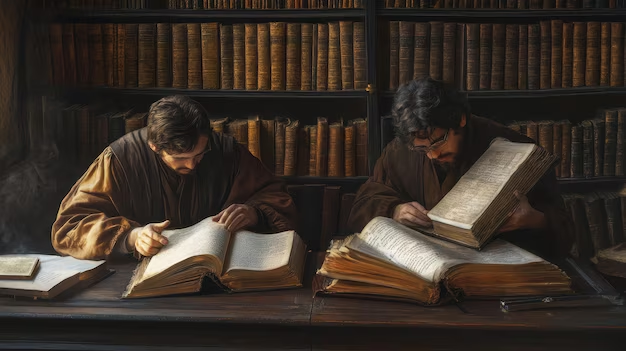
How Venice and Pacioli Sparked the Dawn of Modern Mathematics
Imagine strolling along the bustling canals of Venice in 1501, where the salty Mediterranean breeze carries the distant sounds of traders, scholars, and the clang of printing presses. Hidden within this city’s labyrinthine streets stood the workshop of Aldus Manutius, a visionary printer with ink-stained fingers and a mind fixed on revolutionizing knowledge itself.
One crisp morning, Manutius unveiled a brand-new manuscript—the illustrious “De arte combinatoria,” a weighty work by the famed mathematician and philosopher, Luca Pacioli. This was no ordinary book; for the first time, readers were invited into the vibrant world of combinatorial mathematics, a realm where numbers danced in endless patterns and possibilities. Pacioli’s treatise would soon lay the stepping stones for the great avenues of probability and game theory, igniting the imaginations of future generations.
As news of Pacioli’s text spread across Europe, another quiet revolution was brewing. For centuries, scholars had wrangled with Roman numerals, struggling to perform even the simplest calculations—imagine merchants computing profits or astronomers plotting the stars with nothing but cumbersome X’s and V’s!
But now, mathematical texts began to embrace the straightforward beauty of Hindu-Arabic numerals: 1, 2, 3, and beyond. These “new” digits were more than just symbols—they became the very foundation of modern mathematics, unlocking swifter commerce, sharper navigation, and more expansive scientific inquiry. Markets and classrooms alike buzzed with talk of these efficient numerals, their clarity promising to transform the way people calculated, traded, and envisioned the world.
Yet perhaps the most thrilling change of all was invisible to the eye—a revolution of words and ideas. Across Europe, diligent translators toiled over ancient Greek and Arabic manuscripts, bringing the works of Euclid, Archimedes, and other luminaries into Latin. As thick tomes passed from hand to hand, the minds of mathematicians sparked with newfound knowledge: geometry’s elegant proofs, the mysteries of ratios, and the secrets of classical science.
No longer were such concepts reserved for distant lands or long-lost scholars. Instead, the geometry of the ancients began to inform the architecture, engineering, and even the artistry of the Renaissance. Multiplication tables were standardized, methods for rapid calculation were taught, and the very foundations of education began to shift.
So it was that 1501 became a watershed year—a moment when Europe stepped boldly into the age of modern mathematics. The city of Venice became a beacon, Pacioli and Manutius its torchbearers. Hindu-Arabic numerals simplified life’s calculations, paving the way for commerce, scientific discovery, and even new art forms.
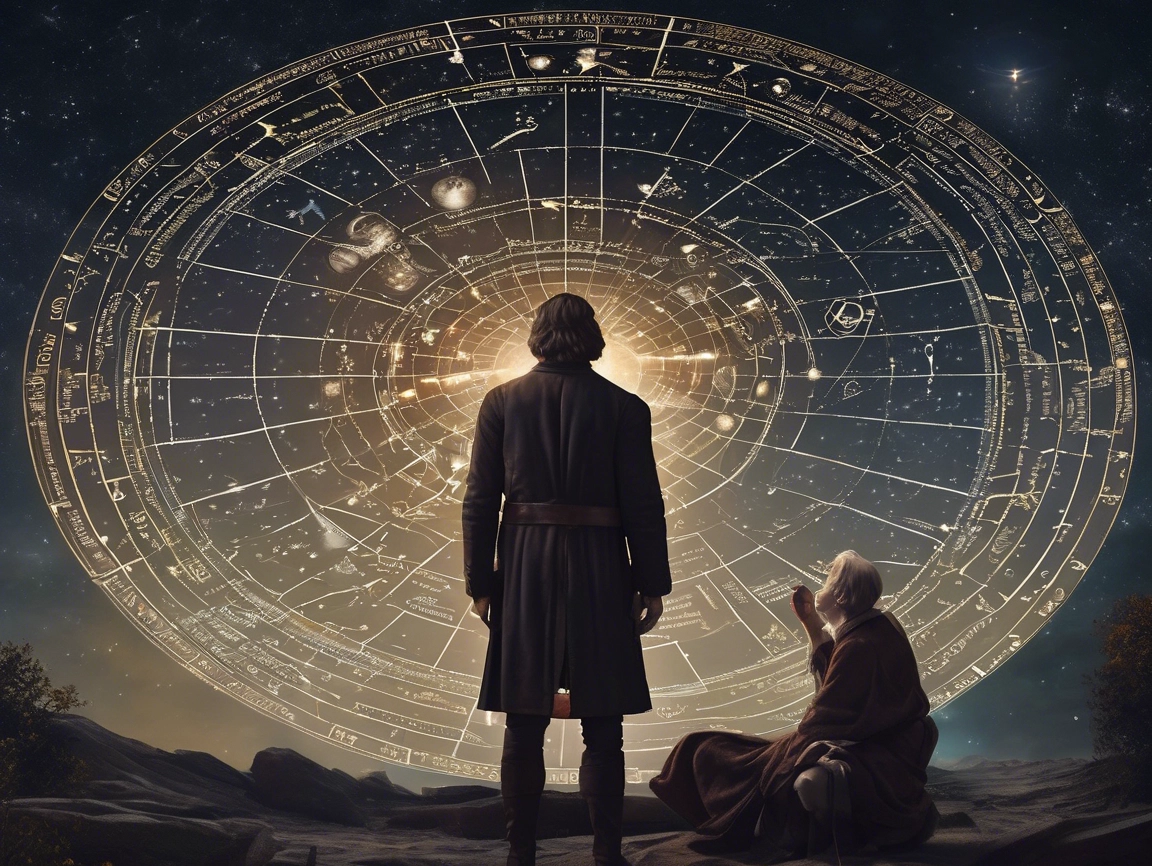
Whispers of Change: The Mathematical Awakening of the Early 1500s
By the close of the 15th century, mathematics was no longer merely a servant of astronomy, art, or commerce. It was becoming a discipline in its own right — logical, structured, and full of possibility.
. It was a time when old certainties were starting to crumble and new ways of thinking were just beginning to take root. In quiet studies and bustling marketplaces alike, mathematics was slowly stepping out of the shadows, ready to transform how people understood both the heavens and the earth.
In 1514, a young Polish astronomer named Nicolaus Copernicus dared to imagine a universe that defied the teachings of centuries. Rather than placing Earth at the center of creation, he proposed a daring alternative: that the Sun, not our planet, stood at the center of the cosmos. This radical idea — the heliocentric model — wasn’t just an astronomical theory; it was a challenge to the very structure of knowledge, one that would shake the foundations of science and religion alike.
While Copernicus was looking skyward, others were focused on more earthly matters — but no less revolutionary. Enter Simon Stevin, a Flemish mathematician who believed that the messy world of fractions could be tamed. Stevin championed the use of decimal fractions, arguing that they made calculations simpler and more intuitive. His ideas didn’t just help merchants and engineers — they planted the seeds for a new era of precision and accessibility in mathematics.
Even before John Napier formally introduced logarithms a century later, the early 1500s were alive with speculation and experimentation around tools that could ease the burden of long calculations. Though still in their infancy, the concepts that would become logarithms were already beginning to stir in the minds of mathematicians, hinting at the powerful transformations to come.
Meanwhile, dusty manuscripts were finding new life. Scholars across Europe were rediscovering the works of the ancient Greeks — especially Euclid’s timeless insights into geometry. These ancient texts weren’t just historical curiosities; they became fuel for a growing fire. Geometry, once a tool of philosophers, was becoming a subject of serious academic pursuit — a foundational pillar of a new, rigorous mathematics.
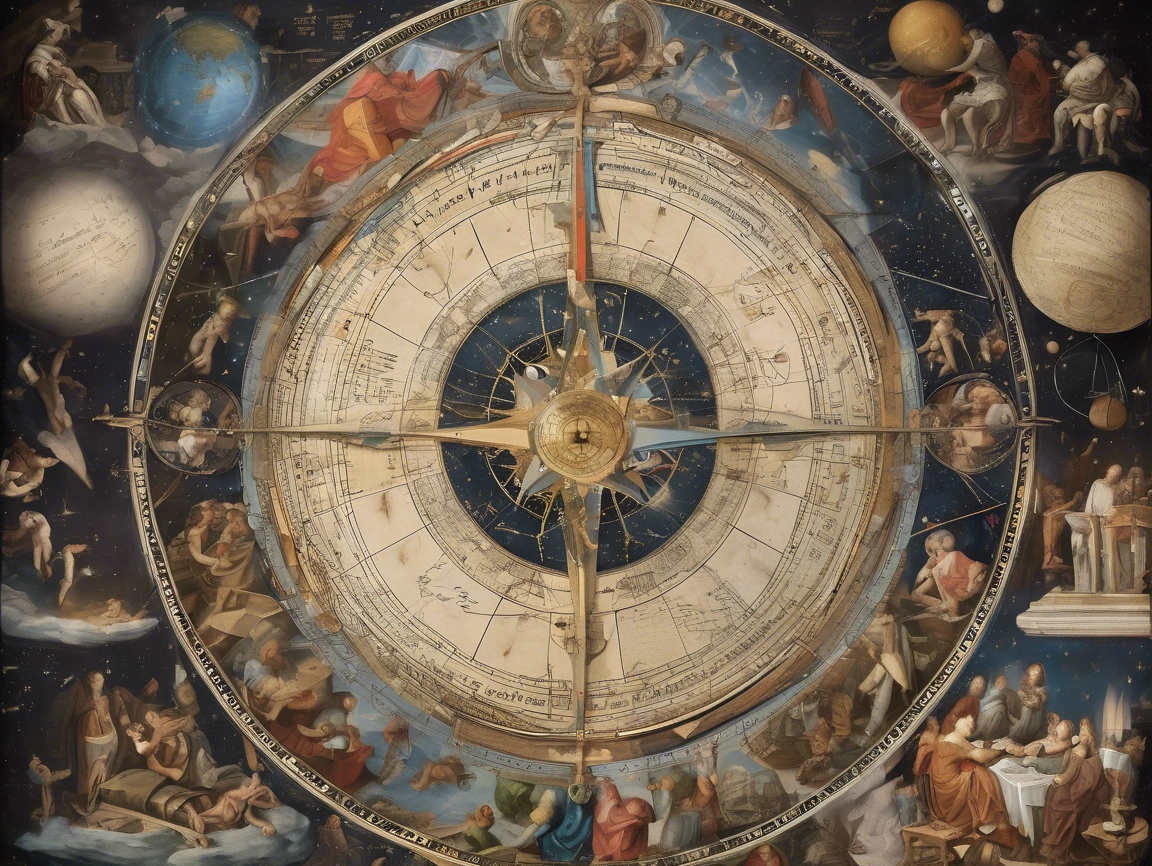
From Copernicus to Dürer: When Math Painted a New World
The years between 1517 and 1520 were anything but ordinary in the world of mathematics. These were not just calendar years—they were crossroads. In quiet study chambers, bustling printing houses, and curious minds across Europe, a spark was catching fire. The numbers were beginning to speak louder than ever before.
It began with whispers of a new kind of magic: logarithms. Though they wouldn’t be fully realized until John Napier’s work a century later, the seeds were already sown. Thinkers had begun to sense that there might be a better, faster way to calculate the vast, ever-growing data of the world—a way to bend multiplication into mere addition.
In 1517, Gerard de Rojas, a Spanish mathematician, made strides in geometry and trigonometry—fields essential not just for theory, but for navigation, astronomy, and architecture. Just a year later, Nikolaus Copernicus, working quietly in the north, applied mathematics to a bold idea: that the Earth was not the center of the universe. His study of celestial circles and motions would reshape astronomy forever.
Meanwhile, in the arts, mathematics was being brought to life with stunning visual clarity. The renowned German artist Albrecht Dürer was sketching not just for beauty, but for proportion and precision. His later book, Underweysung der Messung (1525), would prove how deeply geometry could influence perspective, structure, and artistic truth.
As 1519 and 1520 unfolded, something remarkable began to happen: minds across Europe started connecting. Letters were sent, ideas exchanged, and a shared passion for discovery bloomed.
At the heart of this movement was Johannes Regiomontanus, whose earlier work De Estimatione gained renewed prominence. His approach to measuring angles and practical trigonometry wasn’t just theory—it was essential to explorers charting new worlds. His influence showed that mathematics wasn’t only about abstraction—it was a compass.
The Renaissance was no longer just an artistic revolution—it had become a mathematical one. Collaboration replaced isolation. Curiosity overtook dogma. And the groundwork was laid for the scientific revolutions to come.
As European scholars turned their attention eastward, ancient knowledge began to flood back in. The groundbreaking algebraic insights of al-Khwarizmi and Ibn Sina were rediscovered, translated, and shared across the continent. Once confined to Arabic manuscripts, these ideas now became accessible in Latin, and algebra started weaving its way into the European consciousness—not as foreign, but as foundational.
This was not a rediscovery—it was a reunion of civilizations through numbers.